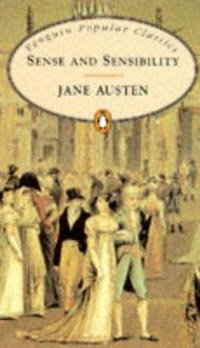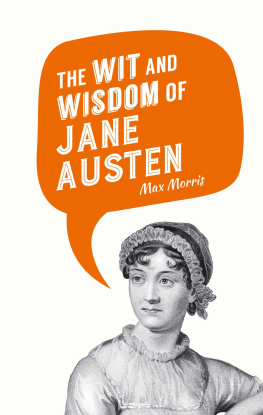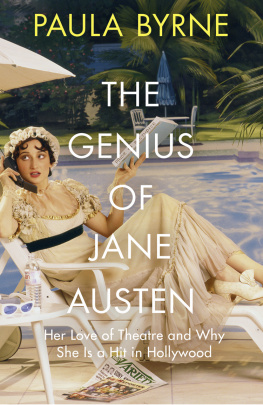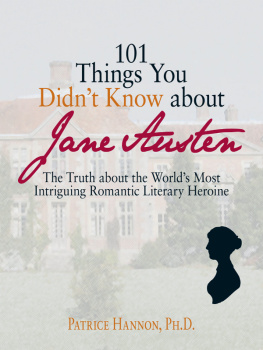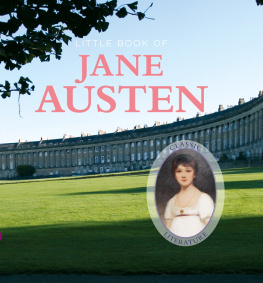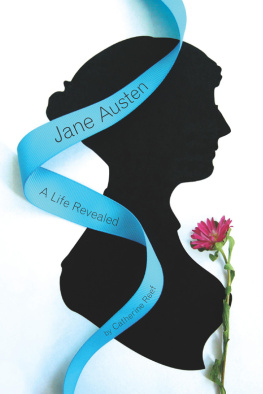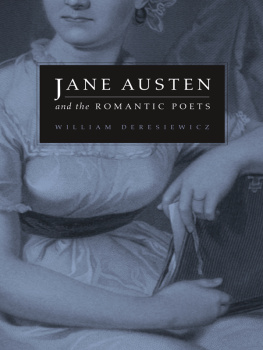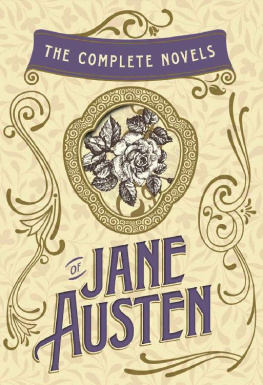CONTENTS




Of personal attractions she possessed a considerable share. Her stature was that of true elegance. It could not have been increased without exceeding the middle height. Her carriage and deportment were quiet, yet graceful. Her features were separately good. Their assemblage produced an unrivalled expression of that cheerfulness, sensibility, and benevolence, which were her real characteristics. Her complexion was of the finest texture. It might with truth be said, that her eloquent blood spoke through her modest cheek. Her voice was extremely sweet. She delivered herself with fluency and precision. Indeed she was formed for elegant and rational society, excelling in conversation as much as in composition.
Henry Austen, Biographical Notice of the Author
In person she was very attractive; her figure was rather tall and slender, her step light and firm, and her whole appearance expressive of health and animation. In complexion she was a clear brunette with a rich colour; she had full round cheeks, with mouth and nose small and well formed bright hazel eyes, and brown hair forming natural curls close round her face.
James Edward Austen Leigh
Mama says she was then the prettiest, silliest, most affected, husband-hunting butterfly she ever remembers [but by 1815] she was no more regarded in society than a poker or a fire screen or any other thin, upright piece of wood or iron that fills its corner in peace and quiet. The case is very different now; she is still a poker, but a poker of whom everyone is afraid.
Mary Russell Mitford
Who was Jane Austen? Its a question with a more complicated answer than you might imagine. Since her first publication in 1811, Austen has gone from total anonymity to a literary saint to the queen of romance. Her physical appearance is still something of a mystery, with a small unfinished and unflattering sketch done by her sister Cassandra being the only definite likeness. There is another watercolour done by her sister in which Jane, dressed in a blue bonnet and pelisse, faces away into the distance, and a small painting in James Stanier Clarkes Friendship Book labelled as Jane Austen, but neither give much indication to her features. Unlike the writers who Austen enjoyed and admired, such as Samuel Johnson and Fanny Burney, she was no celebrity, staying out of the public eye by keeping her authorship a secret.

Austen was born on 16 December 1775 to the Reverend George and Mrs Cassandra Austen during a particularly cold winter, and for the first twenty-five years of her life home would be the Rectory at Steventon, Hampshire. In 1801 Janes father made the decision to retire, moving his wife and daughters to Bath, a place Jane neither admired nor enjoyed. After five years, four homes and the tragic death of Mr Austen, the Austen women stayed a few years at Southampton before settling at Chawton Cottage in 1809. Having written her whole life, Jane would redraft the novels of her youth Sense and Sensibility, Pride and Prejudice and Northanger Abbey and pen three more, Mansfield Park, Emma and Persuasion. Since her first publication in 1811 Jane Austen has gone from an anonymous success to Victorian ideal to the godmother of modern chick-lit. Yet, like the few scarce images available of Austen, none of these seems to feel quite right. Her letters reveal a woman with a keen eye for fashion and society, a sharp, witty tongue and a genuine liveliness of nature who could never have suited the strict morality of the Victorian period. Though her novels love stories are significant contributors to her continuing success, Austen was too much of a social satirist to really be considered chick-lit.

A coloured engraving based on the Cassandra portrait. (c. 1873)
So what was Jane Austen? She was the daughter of a country clergyman, a young lady who enjoyed dancing and society, who travelled often but never left the south of England. She was a devoted sister and later aunt, with a passion for reading and talent with a pen. She never married, and in her lifetime refused any celebrity. Despite the sturdiness of her siblings, Jane was struck by an illness still speculated about today and died in Winchester on 18 July 1817, aged 41.
Many of Jane Austens letters were destroyed after her death, first by her sister Cassandra and later by various nieces and nephews. For a twenty-first-century Austen fan the loss of such important documents is tragic; we lament what insight they could have held, what mysteries they could have solved. Whilst the surviving letters are invaluable in our understanding of Austens life and person, the silences in between them are tantalising. What occurred there that Cassandra thought necessary to destroy the evidence? Of course, the absence of these letters hasnt stopped critics from speculating; they scour the remaining letters, as well as those of her friends and family, for some indication of a love affair or scandal. We cannot leave Austen alone, and the lack of material only continues to fuel our curiosity. It doesnt help perhaps that the lives of her family are so varied and interesting. What wonderful, vibrant people they seem. There are soldiers and sailors, wealthy gentleman and aristocratic connections, as well as other brilliant literary minds. The Austen family anecdotes are almost as entertaining as Janes novels, and they serve as a pleasing insight into her inspirations and motives.

The proud but handsome Mr Darcy. (Pride and Prejudice, Hugh Thomson)
But for her life to be picked apart and analysed never was Austens intention. She preferred to keep her identity as the anonymous Lady responsible for Pride and Prejudice on a need-to-know basis, and watched and listened with amusement to what society had to say. For Austen, the words she placed on paper were the most important thing. Thats why each section of this book is filled with quotes from Austens novels and her letters, because if you are looking for the real Jane Austen, you need look no further than the wisdom and witticisms of her pen.
1

T HE F RENCH R EVOLUTION, AND the subsequent fall of the French monarchy and aristocracy, had an immense impact on Regency England. For years English fashions had followed the trends set by the French courts, which at the time of the Revolution were presided over by King Louis XVI and his queen, the stylish Marie Antoinette. Womens fashions mimicked the excessive, elaborate hooped dresses worn by the Queen of France and mens fashions were no less extravagant. Somewhat thanks to the practice of sending the well-to-do on the Grand Tour, which exposed them to European culture and influenced their ideas of fashionable dress, mens fashion had become almost effeminate. Their hair was worn long, styled elaborately and often tied at the back with ribbon, and finally powdered though many at court chose to wear a wig. The staple of a Georgian gentlemans attire was the frockcoat, which was tightly fitted around the chest and flared from the waist. Like womens dresses, these coats were often made of intricate brocade and expensive materials, worn with breeches, white stockings and low-heeled shoes with large buckles. These fashions are worlds away from the much swooned over masculine styles worn by the likes of Colin Firth in screen adaptations of Jane Austens novels, so what caused such a dramatic change?








